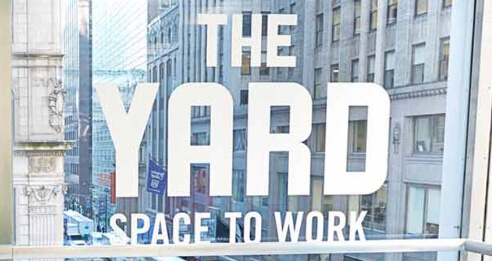
Largest Coworking Companies



In cities all around the world, the concept of open office floor plans filled with multiple freelancers, entrepreneurs, and startups has become increasingly popular. With this increase in demand for coworking spaces, it has led to increased opportunities for real-estate investors to jump into the market place. For some of them, they have seen a viable increase in their profits from their current or previous ownership of more “traditional” office spaces.
Major coworking companies, such as WeWork, have become significant disruptions to the landlords and major corporate office companies around the world. The amenities these companies offer, such as short-term flexible leases and comfortable work stations which many millennials find attractive, have led to an increase in startups and entrepreneurs seeking to break away from the old office floor plans for the newly designed coworking spaces. As a result, many of these established landlords and global property investors have seen an increase in unused space at their locations. For some, instead of holding steadfast against this trend have decided to embrace it and invest their money in coworking spaces, whether that be in new properties or their own. Tishman Speyer is an example of a well established global property investment company that is looking to embrace this new trend by rolling out six coworking spaces of their own in various cities around the country and globe.
Some landlords might be hesitant to get involved in coworking spaces because they are unsure about the return on their investment it might have. After all, the idea of offering up short-term flexible leases might not be as attractive as long-term financial stability. However, financial results have shown that property owners can yield anywhere between 2-3 times more money per square foot over traditional office space. This is in large part due to the ability to charge more at a premium price for allowing flexible shorter-term leases and office amenities,such as communal beer taps and film screening rooms, and providing contemporary and collaboration-friendly spaces.
It is hardly a secret that most people view coworking spaces as a more “millennial” way to conduct daily business. Although millennials are not the only ones who occupy coworking spaces, they do make up the majority of users. Currently, there are 92 million employees that fall within the millennial age range. By 2030 it is estimated that up to 75% of the entire world’s workforce will be comprised of millennials. It is no wonder then why many property owners have begun investing in properties that they can convert into coworking spaces. For some, they have even gotten creative with the buildings they own by tapping into their histories and using it as a selling point for entrepreneurs and startups. These have included old warehouses and even former brothels converting into coworking spaces. This can be viewed all as a way to invest in a workforce that is only continuing to grow.
The way business is primarily conducted in today’s society has evolved over the last 20 years, and that evolution continues to change even to this day. With these changes, the locations and floor plans where business occurs are changing alongside this trend. With an emphasis on making work-related spaces more cohesive and enjoyablet, investors and landlords will continue to look for the latest trends and coworking concepts as a means to attract and progress the working culture.
Save your community manager 41 hours each week—learn how The Yard did it with cloud-based access control.
Read the Case StudyThe Guide to Make Your Space More Profitable
Including interviews with experts and consultants.
Free access to our best guides, industry insights and more.
